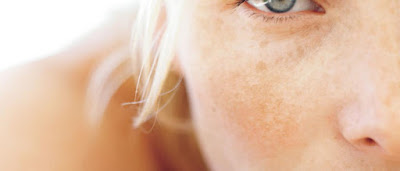Dyschromia Definition, Symptoms, Causes, Treatment
Dyschromia as the name indicate “no color” is defined as an abnormality in the color of the skin. This is a skin disease related to the color. The skin contains some cells named melanocytes which have melanosomes in them. These melanosomes are basically responsible for the color of skin. Presence of increased no. of melanosomes in melanocytes will give darker color to the skin and on the other hand less concentration of melanosomes in melanocytes will impart light color to the skin. Dyschromia is basically the central condition of both hyperchromia and Hypochromia.
It is the pigmentation disorder of skin. The main cause behind Dyschromia is hyperpigmentation of skin which involves appearance of darker patches on skin surrounded by lighter skin color. Dyschromia looks like freckles, age spots, lentigines and some other conditions consist of darker skin patches i.e. melasma. These darker skin patches occurs on skin which is widely exposed to sunlight like face and arms and hands. The most common forms of Dyschromia are age or liver spots. As they appear in a result of sun damage due to greater and frequent exposure to sunlight. Melasma and chloasma have larger darker patches on skin due to hormonal changes.

As there are many forms of Dyschromia appearance and all these forms have different causes behind them. The main causes reported till yet are as follows: Basal cell carcinoma, squamous cell carcinoma, café-au-lait spots, chloasma, cuts, scrapes, wounds, insect bites, minor skin infections, erythrasma, melasma, melanoma, moles, bathing trunk nevi, giant nevi, Mongolian blue spots, photosensitivity which occurs as a result of medication or other specific drugs, pityriasis alba, radiation therapy, rashes, sun burn, sun tan, tinea versicolor, due to unevenly used sunblock or sunscreen before going out which leads to sun burn or tan and vitiligo.
As Dyschromia is a skin disease so the appearance of this condition is main symptom. The skin of patient suffering from Dyschromia appears as patchy skin, mostly red and purple color patches all over the skin. This change in color occurs due to constriction of blood vessels. When blood vessels constrict, these are not able to supply blood to their destination properly and this hindrance allow the blood to accumulate at certain points leading to appearance of red color patches. Patient also suffers from pain and difficulty in breathing. These are the main symptoms associated with Dyschromia.
The best way to treat Dyschromia is the prevention of skin to avoid exposure to direct sunlight. Patient should use sunscreen and sunblock to avoid the skin from harmful rays. Starting treatment of Dyschromia include the use of topical drug dosage forms like hydroquinone which bleaches the skin, retinoid or steroids. Sometimes TCA’s are also used to treat hyperpigmentation in the form of topical dosage form. TCA’s lighten the dark patchy areas of skin. Apart from the above mentioned treatment, Dyschromia can be treated via IPL (intense pulse light) and laser technology. All these treatments are used to improve the color of the skin.
It is the pigmentation disorder of skin. The main cause behind Dyschromia is hyperpigmentation of skin which involves appearance of darker patches on skin surrounded by lighter skin color. Dyschromia looks like freckles, age spots, lentigines and some other conditions consist of darker skin patches i.e. melasma. These darker skin patches occurs on skin which is widely exposed to sunlight like face and arms and hands. The most common forms of Dyschromia are age or liver spots. As they appear in a result of sun damage due to greater and frequent exposure to sunlight. Melasma and chloasma have larger darker patches on skin due to hormonal changes.

Dyschromia Causes
As there are many forms of Dyschromia appearance and all these forms have different causes behind them. The main causes reported till yet are as follows: Basal cell carcinoma, squamous cell carcinoma, café-au-lait spots, chloasma, cuts, scrapes, wounds, insect bites, minor skin infections, erythrasma, melasma, melanoma, moles, bathing trunk nevi, giant nevi, Mongolian blue spots, photosensitivity which occurs as a result of medication or other specific drugs, pityriasis alba, radiation therapy, rashes, sun burn, sun tan, tinea versicolor, due to unevenly used sunblock or sunscreen before going out which leads to sun burn or tan and vitiligo.
Dyschromia Symptoms
As Dyschromia is a skin disease so the appearance of this condition is main symptom. The skin of patient suffering from Dyschromia appears as patchy skin, mostly red and purple color patches all over the skin. This change in color occurs due to constriction of blood vessels. When blood vessels constrict, these are not able to supply blood to their destination properly and this hindrance allow the blood to accumulate at certain points leading to appearance of red color patches. Patient also suffers from pain and difficulty in breathing. These are the main symptoms associated with Dyschromia.
Dyschromia Treatment
The best way to treat Dyschromia is the prevention of skin to avoid exposure to direct sunlight. Patient should use sunscreen and sunblock to avoid the skin from harmful rays. Starting treatment of Dyschromia include the use of topical drug dosage forms like hydroquinone which bleaches the skin, retinoid or steroids. Sometimes TCA’s are also used to treat hyperpigmentation in the form of topical dosage form. TCA’s lighten the dark patchy areas of skin. Apart from the above mentioned treatment, Dyschromia can be treated via IPL (intense pulse light) and laser technology. All these treatments are used to improve the color of the skin.
Dyschromia Definition, Symptoms, Causes, Treatment
 Reviewed by Simon Albert
on
July 24, 2017
Rating:
Reviewed by Simon Albert
on
July 24, 2017
Rating:
 Reviewed by Simon Albert
on
July 24, 2017
Rating:
Reviewed by Simon Albert
on
July 24, 2017
Rating:











